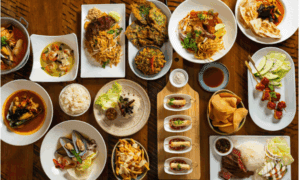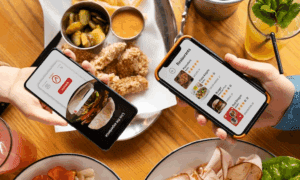At the heart of every Passover celebration lies the Pesach Seder, a ceremonial meal rich in symbolic foods that represent aspects of the Exodus story. The culinary aspect of Pesach is not just about eating; it’s a way to experience and pass down tradition. Pesach 2024 Programs, which bring Jewish communities together during the holiday, offer participants an opportunity to savor the culinary delights of Pesach while connecting with their heritage.
Symbolic Foods:
The Passover Seder is the focal point of the Pesach holiday, and it features a meticulously curated menu that includes foods with deep symbolic meaning. These symbolic foods are an integral part of the Passover experience, and they serve as a reminder of the Israelites’ journey from slavery to freedom. Each food item on the Seder plate carries a distinct message, allowing participants to retell the Exodus story through their senses.
· Matzah:
Matzah, or unleavened bread, is one of the central components of the Passover meal. Its significance lies in its association with the haste of the Israelites’ departure from Egypt. During the holiday, leavened bread is forbidden, and matzah becomes the primary source of sustenance. Pesach programs ensure that participants not only partake of matzah but also have the opportunity to learn about its historical and spiritual importance.
· Maror:
The bitter herbs, often represented by horseradish, symbolize the bitterness of slavery. Eating maror is a poignant reminder of the suffering endured by the Israelites during their servitude in Egypt. Pesach programs focus on the correct preparation and consumption of maror, which involves striking a balance between the bitterness of the past and the hope of the future.
· Charoset:
Charoset is a sweet mixture made from fruits, nuts, and wine. It serves as a symbol of the mortar used by the Israelites in their forced labor to build Egyptian cities. The sweet and grainy texture of charoset offers a poignant contrast to the bitterness of maror, highlighting the duality of the Passover story. Participants in Pesach programs have the opportunity to create and taste charoset, adding a layer of sweetness to the Seder experience.
· Eggs and Shank Bone:
A roasted egg and a shank bone are also included on the Seder plate, representing the sacrifices made in the Holy Temple in Jerusalem. While these items are not typically consumed during the Seder, they hold a place of importance on the table. Pesach programs often include explanations of the significance of these symbols, allowing participants to connect with the historical and spiritual aspects of Passover.
Traditional Passover Meals:
In addition to the symbolic foods, traditional Passover meals are meticulously prepared in Pesach programs. These meals adhere to the strict dietary laws of Passover, which prohibit the consumption of leavened bread. Instead, matzah is used as the staple ingredient in various dishes. Participants can savor a variety of traditional Passover delicacies, including matzah ball soup, gefilte fish, brisket, and a wide array of vegetable dishes.
Passover Desserts:
No Passover meal is complete without dessert, and Pesach programs ensure that participants have the opportunity to savor Passover-friendly sweets. Flourless chocolate cakes, macaroons, and various fruit-based desserts take center stage, offering a delicious and satisfying conclusion to the Seder meal.



































